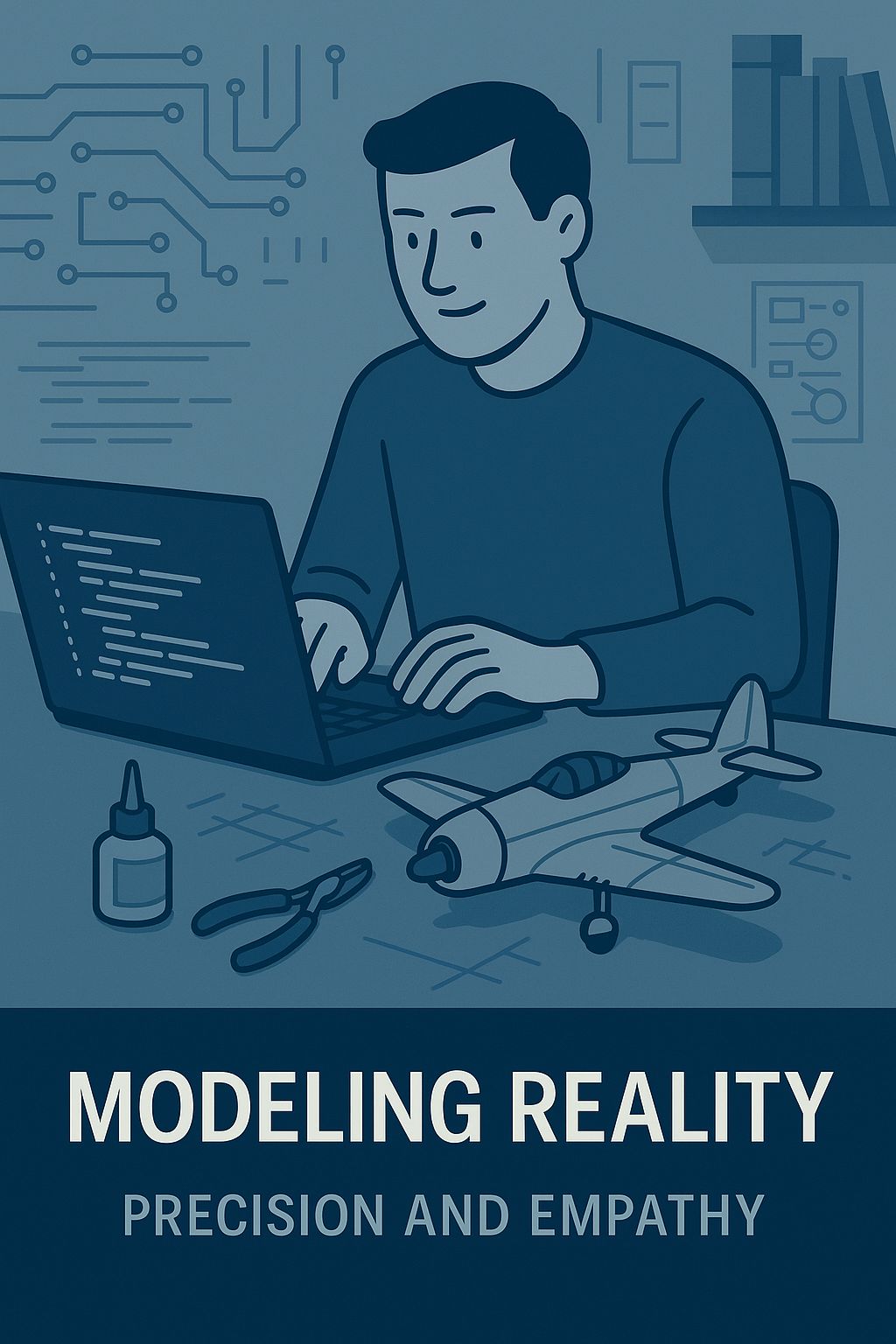
Building software has never felt like pure engineering to me.
It feels like modeling—the same instinct that draws me to plastic kits on my workbench.
Both start with raw parts and a plan. Both demand patience, precision, and empathy for how things fit together. And both, at their best, reveal something true about how the world works.
When I design systems, I’m not just writing code—I’m building a model of reality. Abstraction, fidelity, structure—the same choices I make with glue and paint, I make with logic and syntax.
Software as Model Building
At its heart, software engineering is modeling. Every domain, every process, every system represents some slice of reality—abstracted, simplified, and reconstructed so machines can work with it.
A database schema is a kind of instruction manual for how the world fits together.
A class diagram is a blueprint of behavior.
A good API doesn’t just pass data; it expresses relationships between things.
When I sit down to model a domain, I feel the same focus I get with a hobby knife and a cutting mat. There’s precision in both—sanding edges, aligning seams, making sure the final assembly clicks. Both demand patience, attention, and the humility to correct mistakes before they compound.
You learn to see structure. You learn to see what’s essential.
Abstraction and Fidelity
Modeling—whether in code or plastic—is always a negotiation between fidelity and abstraction. You can’t capture everything. You choose what to keep, and what to leave implied.
A perfect replica of a real aircraft would be overwhelming at 1:48 scale.
The same is true in software. Model every real-world quirk of a process, and you end up with an unmanageable mess. Abstract too much, and it loses realism—the system stops feeling true.
The art lies in deciding what matters.
In code, that might mean finding the core entities of a domain—the few objects that define how the system behaves.
In modeling, it might mean deciding which panel lines to emphasize and which to let disappear under paint.
Either way, the work teaches restraint. Representation isn’t mimicry. It’s interpretation.
Precision and Empathy
What connects engineering and art, for me, is empathy—not just the emotional kind, but a curiosity about how things work.
To model something well, you have to love the subject enough to learn its logic.
A good modeler knows why a cockpit looks the way it does.
A good engineer knows why a system behaves the way it does.
That’s empathy—the willingness to inhabit another structure until you can rebuild it faithfully.
And there’s humility in that, too. Modeling teaches respect for constraints. Plastic doesn’t always cooperate. Neither does code. You sand, adjust, iterate, refactor. You learn to work with the material instead of forcing it to obey.
The Joy of Completion
Then comes the moment when it all clicks—the model assembled, the code deployed, the creation standing on its own. It’s not perfect, but it’s coherent. It holds together.
That’s the quiet joy that keeps me building, whether in code, styrene, or story.
It’s the satisfaction of making sense of something complex, distilling it into a form others can see, use, or feel.
Every finished model—digital or physical—is a statement: this is how I understand the world.
A Unified Craft
Over time, I’ve stopped treating these pursuits as separate hobbies.
They’re all facets of the same discipline: the craft of modeling reality.
- Fiction models the human experience—our inner systems and emotional logic.
- Software models how the world operates—its workflows, patterns, and processes.
- Plastic modeling captures the physical—the tangible details that give history weight.
Each medium sharpens the others.
Writing teaches empathy.
Modeling teaches patience.
Engineering teaches clarity.
Together, they remind me that understanding is something you build with your hands, your mind, and your imagination.
Closing Reflection
Whether you’re coding, writing, or gluing a wing to a fuselage, you’re doing the same thing: creating models of truth.
You’re taking what’s complex, stripping away what isn’t essential, and leaving behind something that captures essence.
It’s all the same act—the pursuit of fidelity, beauty, and understanding.
Because at its best, creation isn’t about imitation.
It’s about revelation.

